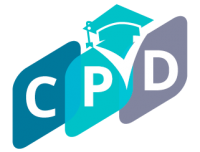Introduction:
Childcare settings play a vital role in the early development and well-being of children, and ensuring a safe environment is paramount. Childcare providers have the responsibility to implement comprehensive safety measures to protect children from potential hazards and create a secure space for learning and growth. In this article, we explore the importance of safety in childcare and highlight essential measures to guarantee the well-being of every child.
- Foundations of Safety: Safety is the foundation upon which quality childcare is built. Parents entrust childcare providers with the well-being of their children, and a safe environment is a fundamental expectation. Prioritizing safety not only safeguards children from accidents and injuries but also contributes to their overall sense of security and well-being.
- Risk Assessment and Mitigation: Childcare providers should conduct thorough risk assessments of the physical environment. Identifying potential hazards, such as sharp objects, electrical outlets, or uneven surfaces, enables providers to implement effective mitigation strategies. Regular evaluations and updates to risk assessments ensure that the childcare setting remains safe and secure.
- Supervision Protocols: Adequate supervision is a key element in ensuring child safety. Childcare providers must establish clear protocols for supervision, taking into account the age and developmental stage of each child. Effective supervision involves maintaining a low child-to-adult ratio, ensuring constant visual oversight, and being vigilant to prevent accidents.
- Emergency Preparedness: Childcare providers should have robust emergency preparedness plans in place. This includes protocols for natural disasters, medical emergencies, and fire drills. Regularly practicing emergency procedures ensures that both providers and children are well-prepared to respond calmly and effectively in critical situations.
- Secure Indoor and Outdoor Spaces: Creating secure indoor and outdoor spaces is essential for child safety. Childcare environments should be equipped with childproof locks, safety gates, and secure fencing for outdoor play areas. Regular inspections and maintenance of play equipment ensure that children can explore and play in a safe and protected environment.
- Health and Hygiene Practices: Health and hygiene practices contribute to overall safety in childcare settings. Childcare providers should enforce policies for handwashing, sanitation, and illness prevention. These practices not only reduce the risk of spreading infections but also promote a healthy and hygienic atmosphere for children.
- Background Checks for Staff: Childcare providers must conduct thorough background checks for all staff members. Ensuring that caregivers and staff have passed criminal background checks and are qualified to work with children provides an additional layer of protection. A well-vetted and qualified team contributes to the overall safety and well-being of the children.
- Secure Sleeping Arrangements: Naptime is a crucial part of a child’s day in childcare. Providers should ensure that sleeping arrangements are safe and in accordance with recommended guidelines. This includes using age-appropriate cribs, placing infants on their backs to sleep, and avoiding soft bedding to reduce the risk of Sudden Infant Death Syndrome (SIDS).
- Childproofing Measures: Childproofing the environment is a proactive step in preventing accidents. Childcare providers should implement measures such as securing furniture to walls to prevent tipping, covering electrical outlets, and removing small objects that pose choking hazards. Regular checks and updates to childproofing measures help maintain a safe environment.
- Communication with Parents: Open and transparent communication with parents is essential for maintaining safety in childcare. Providers should keep parents informed about safety protocols, emergency procedures, and any incidents that may occur. Collaborative communication fosters trust and ensures that parents are actively involved in their child’s safety.
- Allergen Management: Childcare providers should be aware of any allergies that children may have and implement strict allergen management practices. This includes clear communication with parents about dietary restrictions, labeling of food items, and training staff on the administration of epinephrine in case of severe allergic reactions.
- CPR and First Aid Training: Childcare providers should undergo CPR and first aid training to respond effectively in case of medical emergencies. Having staff members with these essential skills can make a significant difference in ensuring the safety and well-being of children while waiting for professional medical assistance.
- Transportation Safety: If transportation is provided as part of the childcare service, strict safety measures should be in place. This includes using properly secured car seats, implementing checklists for attendance during transportation, and ensuring that drivers are trained in safe driving practices.
- Regular Safety Training for Staff: Ongoing safety training for childcare staff is crucial to staying updated on best practices and maintaining a culture of safety. Regular training sessions cover topics such as first aid, emergency response, and any new safety guidelines or regulations.
Conclusion:
Childcare providers play a pivotal role in shaping the early experiences of children, and safety measures are the cornerstone of a nurturing and secure environment. By prioritizing risk assessment, supervision protocols, emergency preparedness, and open communication with parents, childcare settings can create a space where children can learn, explore, and grow with confidence. Implementing and maintaining comprehensive safety measures ensures that every child in childcare is provided with the protection and care they need to thrive.
